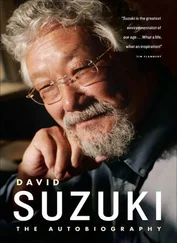“Two weeks ago, a family of four vanished from this house in the suburbs of Takato.”
Instantly, Saeko was riveted. The words penetrated deeply into her consciousness, rudely stirring up memories of the past: the chirping of cicada a vivid cascade, the steep stone stairs leading up to a shrine, the thick canopy of giant cedars forming a ceiling overhead, beams of blinding summer sun streaming down through the gaps …
Interrupting Saeko’s memories, the female reporter had continued, holding a microphone in her left hand and pointing towards the house with her right, her face a mask of gravity: “The entire Fujimura family of four has disappeared from their home. They left dishes freshly washed in the kitchen, the table set with tea cups, the bathtub full of water, and the laundry machine full of clothes. There are no signs that the house has been ransacked. Everything here is perfectly normal, except that the house’s inhabitants are gone. Nobody has any idea why the Fujimuras would have disappeared. They were well-to-do, as you can see. They had no debts, no ties to any religious cult. Their disappearance is an absolute mystery.”
A relative of the family was shown making the standard remarks: she had no idea why the family had disappeared, and she prayed for their safe return. Then the female reporter reappeared.
“We all hope the Fujimura family is safe.”
From there, the show shifted abruptly into a story about two popular celebrities getting married. Saeko had lost interest and changed the station.
For a while, the disappearance of the Fujimura family was featured on various TV gossip shows and magazine close-ups, but after about a month the media attention had waned. No new developments had come to light, and there simply wasn’t any material to support further coverage, even though public interest in the incident remained high and the entire nation was aware of the story.
Time passed without the investigation making any headway, and before long, nearly ten months had transpired without anyone learning what had become of the Fujimuras.
Saeko had never expected to become involved with the case. But that July, just half a year after the family’s disappearance, she had received a phone call from Maezono, chief editor of the Sea Bird monthly magazine at Azuka Press. Saeko knew Maezono wanted to offer her an assignment even before the meeting. From the tone she picked up on the phone, it was probably a substantial job. Maezono had even hinted at the possibility of serialization.
At the front desk of Azuka Press the next day the receptionist buzzed Maezono’s office. When the large woman came waddling down the stairs, the first words out of her mouth were: “Let’s grab some lunch.”
She invited Saeko to a nearby Italian restaurant. It was a trick of the trade — treat the contractor to a meal, then gently propose a deal over a full stomach. When they had finished eating and were sipping their postprandial coffees, Maezono finally got down to business.
“It’s about the Fujimura family’s disappearance. You’ve heard of it, I assume?”
“Of course.” Saeko’s response was immediate.
“Well? Are you interested?” Maezono probed, not skipping a beat.
Was she interested? To Saeko, nothing was as critical as a missing person case, and Maezono knew it.
In response to Saeko’s silent stare, Maezono passed her a sheaf of papers. “If you don’t want to do it, just say so. But I don’t know anyone more qualified for this assignment.”
“You want me to do an investigative report on the incident?”
“Yes.”
“I’m interested in the case.”
It was definitely an issue that Saeko cared about. But considering her own emotional health, perhaps it was one she needed to avoid. If she wrote about a missing persons case, it was bound to stir up memories of her father’s disappearance.
Saeko had conducted an exhaustive search for her father, so she knew a thing or two about looking for missing people. It seemed Maezono was scheming to add such cases to Saeko’s fields of expertise as a reporter.
“Will you do it? I realize this is a sensitive topic for you. But sometimes confronting an issue head-on is the best way to overcome it. Like that article you did on your divorce.”
That May, just after her divorce, Saeko had been offered an opportunity to publish a humorous account of the experience in a sports tabloid. Upon marrying, Saeko had quit her job as editor of a science magazine to pursue an independent career as a freelance reporter. The offer couldn’t have come at a better time, since she needed to establish a broader base as a writer, and writing a tongue-in-cheek story about divorce was definitely a foray into new terrain.
At the time, Maezono and Saeko had never met. But when the article came out, Maezono read it and immediately contacted Saeko. Maezono was forty-two and also divorced. She told Saeko that the article had resonated with her.
I liked how you used humor to weather your pain and suffering .
Having tasted the same bitter fruit, the two women hit it off from the moment they met, laughing it up over their ex-husbands’ foibles and idiosyncrasies. Immediately, Maezono had begun to assign Saeko writing jobs, motivated less by her desire to help Saeko survive economically as a single woman than by her appreciation of Saeko’s work ethic and meticulous research.
At the time, Maezono had just recently been appointed editor-in-chief and was striving so zealously to increase readership as to raise a few eyebrows. If she succeeded, Maezono felt she would validate the board’s decision to select her for the job. If she failed, not only did she stand to lose her job, it would also compromise the standing of the board members who had supported her.
In order to sell more subscriptions, Maezono came up with the idea of giving the magazine’s soap-box tone a makeover. There was a limit to how many copies they could sell with pages primarily designed to appeal to male readers. The fastest way to increase readership was to conquer a broader demographic. Maezono’s battle plan was to engage the interest of female readers by publishing detailed investigative reports of the type of incidents featured on the local news pages.
The plan worked. The magazine’s subscription rate rose sharply, and Maezono’s performance as editor-in-chief was highly lauded. Her talents were also evident in the way she leveraged and further honed Saeko’s scientific approach to investigative reporting.
Meanwhile, Saeko derived new opportunities to define herself as a writer through her work with Maezono, and the two divorcées developed a relationship of mutual support.
Maezono eyed Saeko while simultaneously browsing the dessert menu. “Besides, it would be such a waste not to apply your unique skills here. Of course, if you think it would be traumatic for you …”
Recounting the details of her divorce had been difficult for Saeko, even though the tone of the article had been lighthearted. At first, it was hard to comprehend why the topic was so painful — she certainly wasn’t still in love with her ex. But in the process of writing, Saeko was forced to face a new realization: her husband had been right about her unresolved feelings towards her father. She was forced to finally admit to herself that she had always compared any man in her life — her lovers, her husband — to her father. She glorified her father in his absence, building up an idealized image of him in her subconscious against which all other men paled. More evidence that she was unfit for marriage.
But Maezono was right. Writing the comedic account of her divorce had helped Saeko to contend with those messy emotions.
“What do you have in mind?” she asked.
Читать дальше












